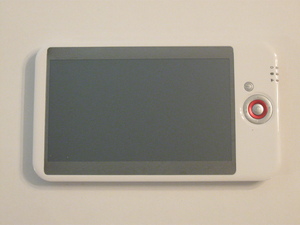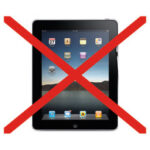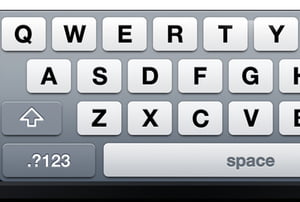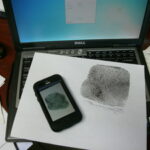Small Computer Portability Trumps Unwieldy Desktops
In recent years, computing devices have gotten smaller; additionally, laptop and tablet sales now outpace desktop sales – clearly, this is a sign that people value and desire mobility and portability; and that there is a paradigm shift in the industry regarding the future of the computer desktop.
Tablet’s Limited Utility Niche
Tablet computers, such as Samsung Galaxy and iPad are useful in a variety of applications, such as paperless patient charts for doctors, e-books for students and viewing lesson assignments as videos or slide presentations; as well as video chat.
Unfortunately, the lack of a high-capacity input mechanism , such as a traditional keyboard and mouse, limits the utility of tablets as a potential desktop replacement. Therefore, it is unlikely that the tablet form factor alone will replace the desktop.
Visual Interfaces of the Future – Eyeglass Visors
Visors (eyeglasses that project onto the retina) will be the personal computer monitors of the future. These and other display variations, such as heads-up displays for cars, ultimately will replace traditional monitors.
Future Visual Display Choice for Group Viewing
Projector output will be the “virtual mega-monitor” of the future, allowing for extensible screens of varying size to exist anywhere an image clearly can be projected. This will include the ability to project onto light-colored walls, projector screens at medium and large conferences and large projection screens in offices and cubicles. Mini-projectors already exist as stand-alone units, as well as cell phones with built-in mini-projectors .
With Proper Input and Display Mechanisms, Smaller Computers will Flourish
For smaller computers, including tablets and ultra-small computers, to flourish and to replace existing desktops, they must utilize practical and expedient data input mechanisms, such as the combination of the traditional keyboard and mouse (wireless or wired). They also must use proper display mechanims such as as retina-display eyeglasses and/or projector outputs; attachable projector units; or wireless or other means of projecting their outputs to larger devices like high-definition monitors, televisions, whiteboards projector screens.
Some Advantages of Ultra-Small Computers
Ultra-small computers are portable, less power-hungry, produce less heat and require less cooling than traditional desktops. Eventually they may become ‘stack-able,’ into combined units, to allow for parallel computing and shared resources. They can be set up as ” headless” monitoring devices, whereby the technician doesn’t need a display or input device and, instead, only needs to connect via remote methods, such as Remote Desktop Protocol (RDP), LogmeIn and GoToMyPC.
Ultra-small computers can be moved in a matter of seconds, if a person needs to relocate along with a specific desktop device. This includes ultra-portability, to the point that computers will become truly “wearable,” such that each person has a ” workstation-on-a-wrist” or a “workstation-on-a-belt.
Some Disadvantages of Ultra-Small Computers
Currently, ultra-small computers have limited processing power and limited memory capacity. Additionally, their small size restricts the ability to upgrade the devices. Such small devices also are easy to steal.
Ultimate Desktop Prediction: The Ultra-portable and Cell Phone will Merge
Many readers may be able to gauge that this article tends to overlook the fact that cell phones already have many of these capabilities. In fact, they do – but, until they merge with the desktop operating system, they are not likely to replace existing desktops. Alternatively, if the prevalent Android, iOS and other “cell-centric” operating systems gain more of an ability to run truly native Microsoft Office and other day-to-day workstation applications, with ability to connect to appropriately large and varied output mechanisms, then the desktop will begin to die altogether.
This author predicts that such merging is inevitable and that the desktop landscape of the future will involve more of a desk, and less of desktop computer. What will the desktop of the future look like? Your cell phone, possibly connected to a small, powered docking device which, in turn, is wirelessly connected to a keyboard and mouse (possibly a virtually-projected keyboard), as well as to retina-display eyeglasses or to a mini-projector, which displays output onto a 30-inch white projection board that replaces your antiquated LED monitor.





